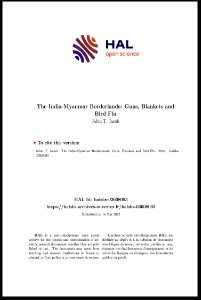By Saket Badolaand and Astha Gautam
TRAFFIC’s “HIGH FLYING: Insight into wildlife trafficking through India's airports” analysis found the trafficking of over 70,000 native and exotic wild animals, including their body parts or derivatives (weighing around 4000kg) in 140 wildlife seizure incidents at 18 Indian airports between 2011-2020. Many of the seized species are categorised as threatened on the IUCN Red List and listed in the Convention on International Trade in Endangered Species of Wild Fauna and Flora (CITES) Appendices, regulating its trade to protect the species from decline.
One example, the Indian Star Tortoise, is listed as Vulnerable on the IUCN Red List. However, traffickers clearly disregard the threatened status and international CITES rules in Appendix I prohibiting its trade as the Indian Star Tortoise was the highest number of native species seized between 2011-2020. Among the species groups seized (including both Indian and exotic species), reptiles were the most encountered group during the study period (46%), followed by mammals (18%), timber (13%), and species from the marine environment (10%).
The highest number of native species seized included the Indian Star Tortoise, followed by the Black Pond Turtle Geoclemys hamiltonii.
The highest number of non-native species seized, Red-Eared Slider Turtle, followed by the Chinese Pond Turtle Mauremys reevesii.
Chennai International Airport, Tamil Nadu, recorded the highest number of wildlife seizure incidents, followed by Chhatrapati Shivaji International Airport, Mumbai and Indira Gandhi Airport New Delhi. The study's findings reflect the ongoing trafficking and not an actual representation as most of the illegal wildlife trade goes unchecked and unreported.
Godalming, UK: Traffic, 2022. 12p.



